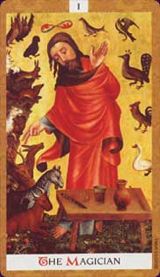“…attraction and harmony confer perennial solemnity. …spiritual attraction perfects the concordances.”*
SEVENTH (TONE)
We have reached consideration of the seventh interval: it is called so, but in reality it originates previously. When the marvel is completed and the fifth is born, two other intervals, the fourth, of which we have spoken already, and the TONE, are also formed, one might say at the same time (but really time does not exist where distances do not exist).
Thus the seventh interval does not depend on the 7 as a numerical expression, but only in so far as it is the seventh among its brothers. This observation opens up new perspectives on the way of understanding the quality and functions of the number seven.
The seven, in fact, is the quantified part of the first “ekmelic” value, i.e., outside the system. If one vibrates a string, subdivided so as to be 1/7, 2/7 or 3/7 of the total, one hears it as clearly “out of tune” with this latter and with all the tonal values of the divisions of the senarius (that is, expressed by the numbers from 1 to 6 inclusive and their multiples and sub-multiples).
The seven, in this regard, is rightly considered as an outsider; not an enemy, but a citizen of another order, a member of another system which, though supported by identical laws, remains separate and does not mix with the others. It is thus a symbol and a reminder of the fact that, given a world that is orderly and perfect in itself, other worlds always exist which are just as legitimate and regular, which must be taken into account and with which it will be necessary to be attuned in a superior and more inclusive harmony.
The presence of the seven is a severe warning: there is no limit to the process of harmonization, there is no rest from searching, perfection is not the standstill of lethargy; all this is implicit in the symbolism of the seven. The seven is, and keeps alive restlessness and anxiety for perfection. Therefore it is considered as baleful and beneficent at the same time by various religions; it is like the inspector who does not check the peace that has been reached but the capacity to go beyond it in view of new beginnings.
It is therefore necessary to distinguish between this disconcerting but inevitable presence and the qualities and functions of the TONE which, as we have seen, has only certain characteristics of order, but not of number, of the seven. The seventh interval is in fact a “measure” of the system gravitating round the senarius and regulated and populated by it. The TONE is the degree which subdivides the scale and all the musical scales (that is, every harmonic “system”).
It is therefore a regulator, a master of ceremonies, a master of rites; and in this lies its essence as seven. Nevertheless it belongs to the system and is not at all outside it.
It seems, therefore, that one must distinguish clearly between the seven as an ekmelic value, and the seven of the intervals, which is a “basis” of co-measurement of the senarius. If anything, one can say that the TONE is the guarantor of harmony between the intervals, major and minor, quite a different thing from being an outsider. It is the necessary tester and in this it assumes, in the lower sphere, analogous functions to those of unison, the supreme creator.  And since its action is exercised among all the intervals, it must be twofold, that is it must possess also the characteristics of the minor intervals. In fact the TONE is divided into major (8/9) and minor (9/10), and in this the essence and the necessity for dualism are reproposed – since one would not be able to co-measure what is dual while remaining unitary, and thus purely subjective. The seventh lord is, in short, a Magician, who manifests a dualism on purpose and controls it, without remaining its prisoner.
And since its action is exercised among all the intervals, it must be twofold, that is it must possess also the characteristics of the minor intervals. In fact the TONE is divided into major (8/9) and minor (9/10), and in this the essence and the necessity for dualism are reproposed – since one would not be able to co-measure what is dual while remaining unitary, and thus purely subjective. The seventh lord is, in short, a Magician, who manifests a dualism on purpose and controls it, without remaining its prisoner.
But it also carries out another function, of extreme importance, which connects it to what was said just now regarding the seven; since it is the extreme point, so to speak, of the senarius, the TONE is both a gate and a Guardian, watching over the regularity of the order and excluding from it the outsiders and the unworthy; it is ready to admit those who have the right to enter, being right and perfect, and to keep away, inexorably, those who do not have their papers in order. Lastly, this inflexible regulator of the rhythms is like a voice which calls and invites those who are qualified to participate in the harmony;  it is the Town-crier of the Order, or its Messenger.
it is the Town-crier of the Order, or its Messenger.
Its functions are precise and clear, as all ceremonies and any rite must be – these actions have, in fact, the aim of excluding irregularities. It is a builder of states of dynamic equilibrium and must therefore continually be in equilibrium between major and minor, between positive and negative, between light and dark, between full and empty. Thus it ends up by being the Celebrant of the eternal marriage between value and number, spirit and substance.
***
If the fifth principle (the mind, the third) is the origin of dualism and thus the creator of form, and the elusive sixth is the one responsible for inversion, the seventh is the one which fixes, materializes, arranges and distributes. From its hands, so to speak, issues a piece of tissue or a net, which, however intricate, is nevertheless regular and cleverly composed. It knots together what the five has split up and the six has reversed. The great Work started by the supreme Lord of unison is here completed in its final form: the canvas is finished and the drawing appears. What the transcendent weaver (the fifth) thought and willed finds, through the work of the seventh Lord, its manifested completion.
But this conclusive act is only the beginning of a new journey, as the life imprisoned in this canvas must in the end be liberated and go back to the primary source. And from the TONE, in fact, the first impulses of this ascension depart – and so the work of the first interval is repeated and begins again in reverse, as the seventh interval is its reflection.
***
The TONE is thus the seventh Ray (which is the nearest to the first), the Master of Ceremonies, the Messenger, the Guard, the Magician, the Master of Rites, the Standard; its presumed colour is purple, which closes the rainbow and links it to ultraviolet, to the zones which are not yet illuminated and are unexplored by divine consciousness.
***







